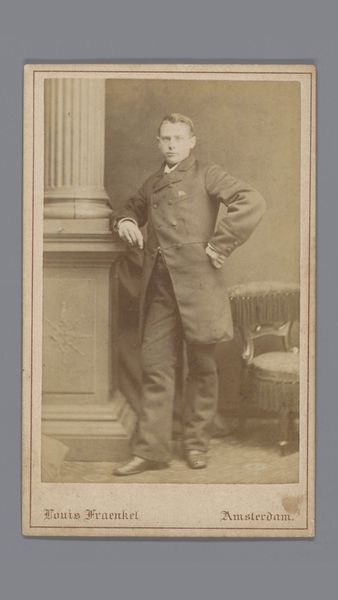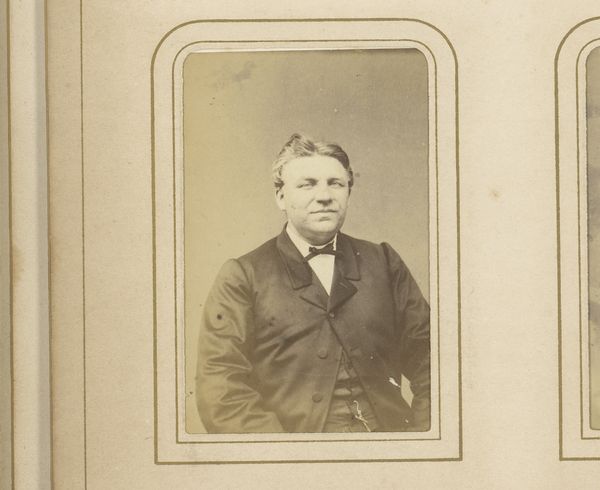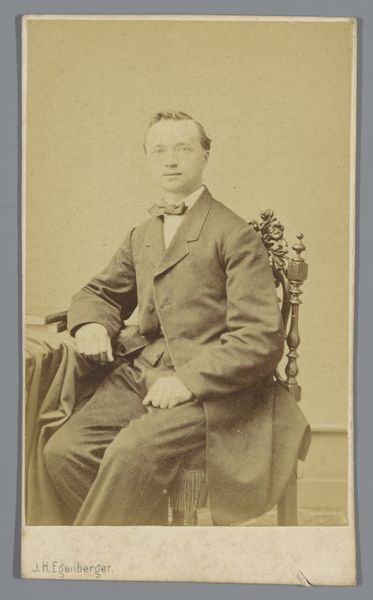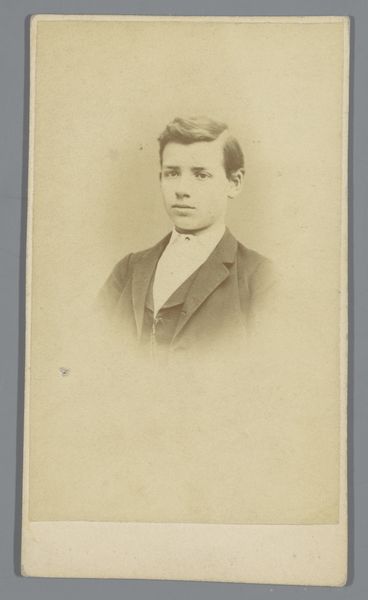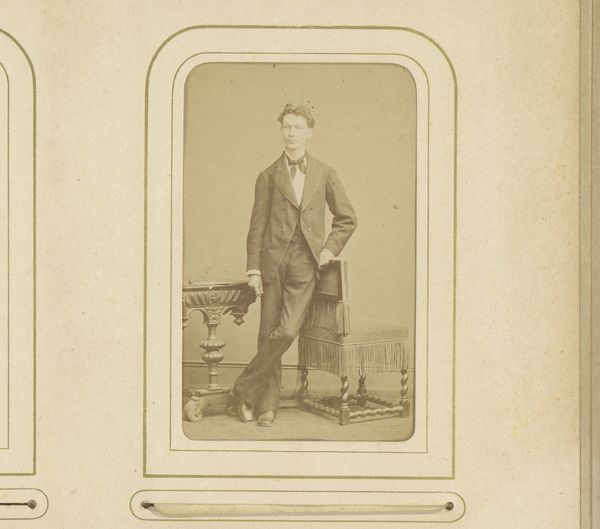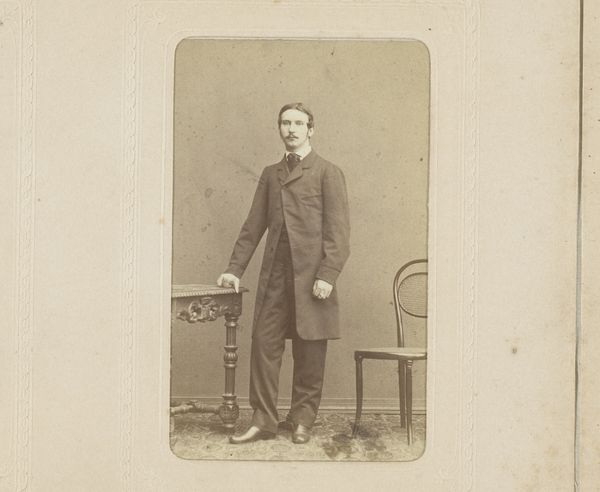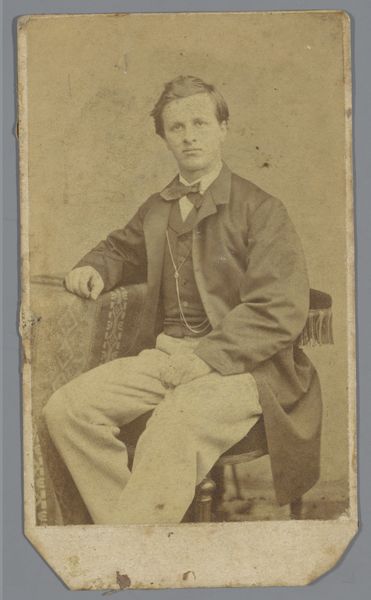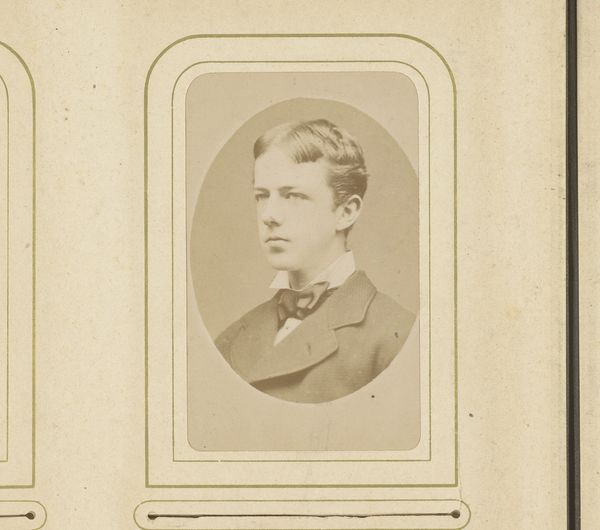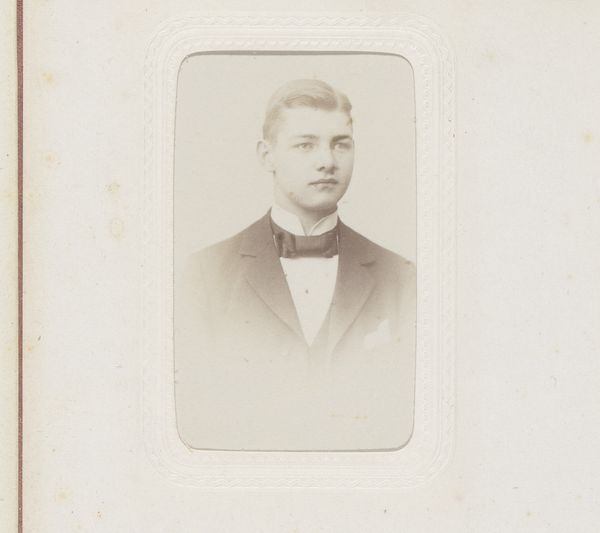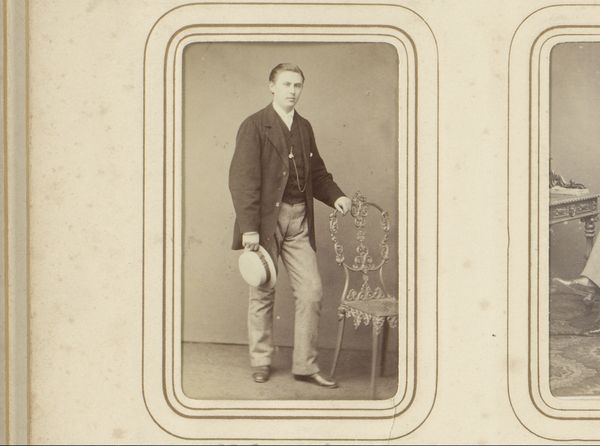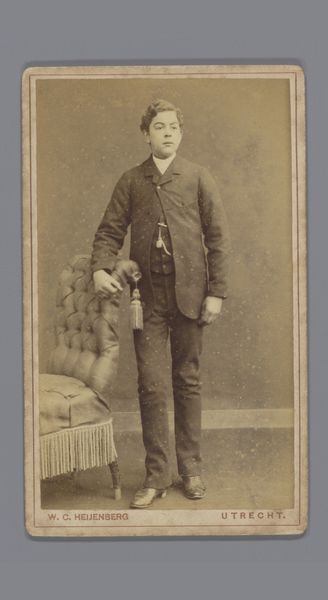
photography, gelatin-silver-print
#
portrait
#
photography
#
historical photography
#
gelatin-silver-print
#
19th century
Dimensions: height 100 mm, width 62 mm
Copyright: Rijks Museum: Open Domain
Curator: Standing before us is a photograph, titled "Portret van een man, staand met hoed in de hand," dating back to between 1860 and 1875. The artwork exemplifies a gelatin-silver print. Editor: It’s strikingly formal, yet he holds that hat so casually. The sepia tones and the way he leans…there's a quietness about the image. Almost melancholic, wouldn't you say? Curator: Gelatin-silver prints gained prominence during this era, playing a vital role in democratizing portraiture. Individuals from various societal levels could afford to have their likeness preserved and distributed, which speaks to the rise of the middle class and photography’s role in identity formation. Editor: Definitely, you can see him posing as if to denote status and yet something in the lack of idealization resists the power dynamics typical in those commissioned pieces. Did he select how and where to pose? His body language feels somehow like subtle agency, if you know what I mean. Curator: Photography studios provided props and backdrops, yet the sitter would bring personal sartorial choices that reflected self-identity and economic status, like the chain on the man's pocket watch here. These portrait studios were part of the fabric of expanding urban environments, offering avenues for social mobility through representation. Editor: Right! So, seeing this photo now prompts questions of who has access to these representations then versus now. Back then maybe a signifier of middle-class emergence; and today we all have our cameras on our phones, shifting the politics around portraiture completely. I like to imagine what he would think about selfies! Curator: That shift in representational power is remarkable. And considering the trajectory from studio portraits to instantaneous sharing encapsulates so much societal and technological change! Editor: Exactly! It's a great reminder about democratization of imaging. Curator: Indeed, and what such democratization of imagery, and this early example of it, have meant for modern art and its representation of politics.
Comments
No comments
Be the first to comment and join the conversation on the ultimate creative platform.
